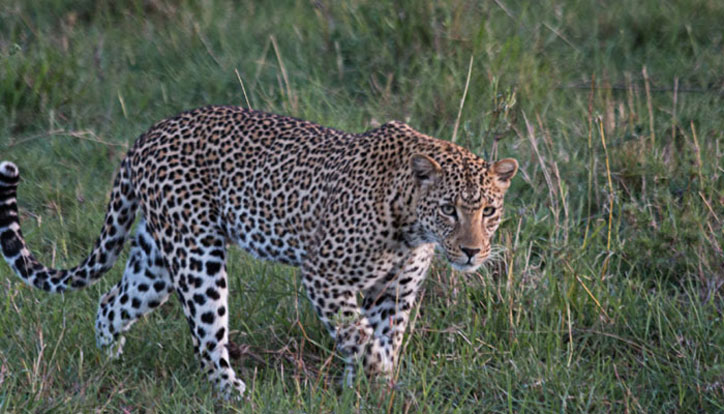 Shimla:
Shimla: This highly elusive wildcat fed on food and good wishes of the locals after he strayed into a Himachal Pradesh helmet in the trans-Himalayas before he made his final exit from this world.
The aging, highly-endangered snow leopard found in his death the same glory that is associated with his life. The villagers, as a mark of respect, gave him a grand farewell.
Wildlife officials are elated over this man-animal bondage. They say this revived bond is helping the survival of the snow leopard in the Spiti Valley, which lies in the state's northernmost part, despite its dependence on their livestock, especially during the winter.
"For the last 10 days, a male snow leopard, which was unable to hunt owing to his old age, came close to Kibber village. Locals accepted his presence as a mark of respect and didn't retaliate," Wildlife Ranger Office Devinder Chauhan, who is posted in Spiti, said.
He said the snow leopard had died of old age on February 21. For six months, his sighting was frequent near the human habitats of the area. (The average age of a snow leopard in the wild is 15 to 18 years.)
At his cremation, the entire villagers gathered to see him off and pay their last respects. The area is dominated by Buddhists, who are mostly vegetarians.
The locals, who mostly grow peas, have adapted themselves to co-exist with the wild animals.
"In order to minimise human-wild animal conflicts, the local communities were sensitised through conservation awareness programmes and this really helped them understand more about how the animals live among people and thus reduce retaliatory killings," Chauhan said.
The state Wildlife Department is monitoring snow leopards in the Spiti Valley, which falls in the Kibber Wildlife Sanctuary, through a satellite-based system to study the reasons for their straying into human habitation, their behavior and population.
Jagdish Bodh, a local, said every day people of the area used to visit the cliff where the snow leopard spent his last days.
"Almost every day we used to gather at the cliff to see the ailing leopard. He hardly looked at us but his eyes conveyed a message to leave him alone," he said.
Bodh said even a carcass was offered by a villager so that it could survive longer. "It barely moved from that spot. When the news about his death circulated, scores of villagers gathered to bid him farewell."
The Wildlife Department cremated the snow leopard -- a Schedule 1 animal under the Wildlife Protection Act of India -- after an autopsy.
Legendary field biologist George Schaller, who has worked for nearly two decades on studying endemic wildlife in the Tibetan Plateau, told IANS in a recent interview that the snow leopard needs protection from pastoral communities.
"They are beautiful and majestic animals that rarely attack humans. They attack only when the villagers attack them with sticks. I have spent nights in their habitat and they passed my sleeping bag.
"Man-animal conflicts are more a social issue. For the conservation of wildlife, you need cooperation of the local communities," he said.
According to Schaller, for conserving the snow leopard there is need to maintain a sizeable population of its prey species like the Asiatic ibex -- a wild goat -- and the Himalayan blue sheep.
Schaller's photograph of a snow leopard, taken in Pakistan in 1970, is the first recorded image of the wild cat.
Apart from the Spiti Valley, the state's Pin Valley National Park, the Great Himalayan National Park and the Pangi and Bharmour areas of Chamba district have a sizable population of snow leopards.
The central government-funded Rs 5.15 crore ($758,000) Snow Leopard Conservation Project is underway in the Spiti Valley, which runs parallel to Tibet.
The programme takes care of restoring the snow leopard's habitat.
Studies by the Wildlife Department show the presence of one snow leopard per 100 sq km in the Spiti Valley.
 Shimla: This highly elusive wildcat fed on food and good wishes of the locals after he strayed into a Himachal Pradesh helmet in the trans-Himalayas before he made his final exit from this world.
Shimla: This highly elusive wildcat fed on food and good wishes of the locals after he strayed into a Himachal Pradesh helmet in the trans-Himalayas before he made his final exit from this world.